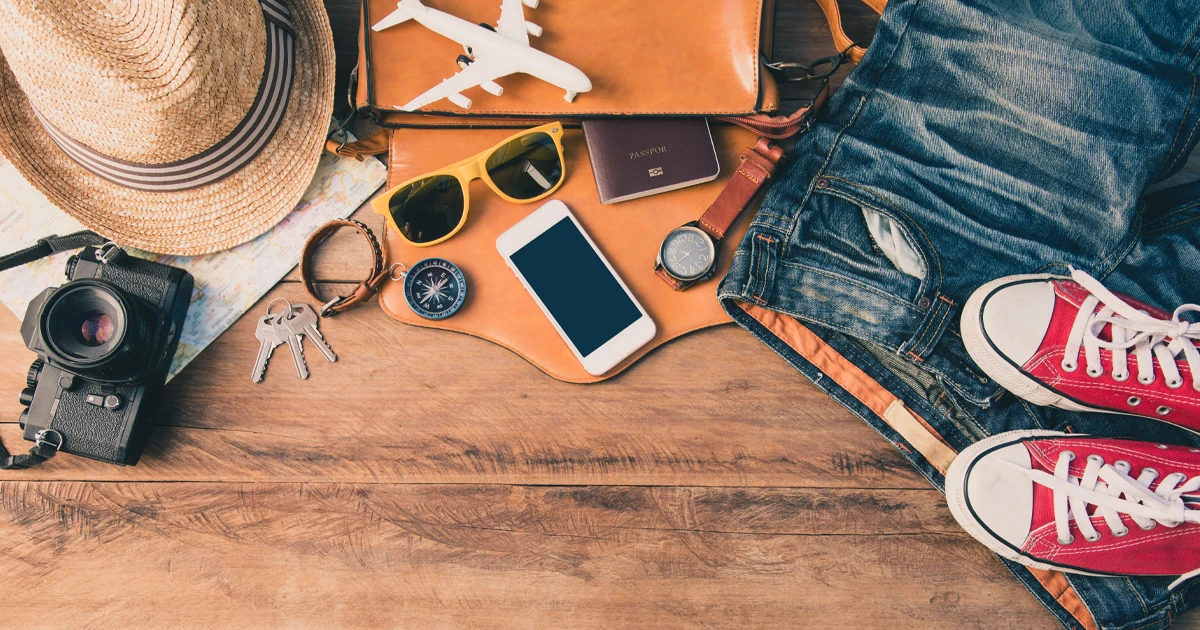In the ever-evolving landscape of the modern United States travel and tourism industry, the importance of brand awareness cannot be overstated. As the economy continues to transform, with digitalization at its core, investing in robust advertising and marketing strategies is a non-negotiable aspect for destinations aiming to grow their visitor pipelines. Bottom line – if they’ve never heard of you, they’re not going to visit. This article explores the vital role of brand awareness in fostering growth in the travel and tourism sector, delving into consumer behavior trends and the impact of digitalization on vacation planning.
The Evolution of Travel Consumer Behavior
DMOS, travel and tourism entities already know this, but consumer behavior in the travel and tourism sector has undergone a paradigm shift, largely driven by the digital revolution. Gone are the days of relying solely on traditional advertising channels; today’s travelers are digitally savvy, connected, and hungry for personalized experiences.
Digital Domination: Planning Vacations in the Online Realm
The majority of travelers now turn to the internet to plan their vacations. Whether it’s researching destinations, reading reviews, or seeking inspiration on social media platforms, the digital realm plays a pivotal role in shaping travel decisions. And it’s becoming easier than ever to do so. As reported recently in The New York Times, travel platforms are striving for adaptations and fixes “designed to make travel planning easier, by refining searches, creating more informative maps and streamlining loyalty programs.”
Search Engines as Travel Advisors
Search engines in particular have become the go-to travel advisors. Potential visitors are more likely to start their journey by typing queries like “best vacation spots” or “family-friendly destinations” into Google. Destinations and attractions that invest in brand awareness-driving SEO strategies to land atop search results enjoy a significant advantage in capturing the attention of prospective travelers.
Social Media Influence
Social media platforms and the influencers who dominate them have also become powerful forces in travel decisions. Engaging content on platforms like Instagram, Facebook, and Pinterest sparks wanderlust and prompts users to add destinations to their travel bucket lists. Smart destination marketers leverage these platforms to showcase the unique offerings of their locales, building brand awareness and connecting with potential visitors.
From Dreaming to Booking: The Importance of Brand Recall
So how does brand awareness fit in with the shifting trends above? Basically, it’s a CROWDED digital landscape. All that investment from so many entities, on so many platforms, makes it VERY hard for destinations to stand out. Putting out engaging, branded content with consistency is critical for cutting through. When travelers recall a destination’s brand, it not only increases the likelihood of choosing that destination but also influences the entire vacation planning process.
How a Well-Executed Brand Awareness Strategy Supports Your Bottom Line
Brand recall built on a well-executed brand awareness strategy gives destinations and attractions REAL return to the bottom line. Here are some of the ways in which that happens:
Boosting Visitor Numbers
In our experience, brand awareness directly correlates with an increase in visitor numbers. And in travel and tourism, as in business generally, the more channels you’re on, the more likely it is you’ll catch someone’s eye. According to the Harvard Business Review, 73% of today’s consumers use more than one channel during a shopping journey. When a destination is top-of-mind for travelers, it becomes a natural choice when planning vacations.
Driving Tourism Revenue
Growing visitor numbers is essential, but the real economic impact of investing in destination and attraction marketing goes beyond foot traffic. As you already know, tourists contribute significantly to local economies through spending on accommodations, dining, activities, and souvenirs. How much? According to the U.S. Dept. of Commerce, the travel and tourism industry “supported 9.5 million American jobs through $1.9 trillion of economic activity in 2019. In fact, 1 in every 20 jobs in the United States was either directly or indirectly supported by travel and tourism.”
Attracting Investors and Partnerships
A well-established brand not only attracts visitors but also garners attention from investors and potential collaborators. Destinations that are recognized and trusted are more likely to secure investments for infrastructure development, leading to enhanced economic development and tourism experiences that further fuel growth.
Navigating the Modern Marketing Landscape with Brand Awareness
In the digital age, the marketing landscape is multifaceted and dynamic. Destinations looking to grow brand awareness will find it difficult to do so without substantial, sustained investments in digital, social and content-influencer marketing.
Digital Advertising: A Cornerstone of Brand Awareness
Digital advertising has emerged as a cornerstone of brand awareness strategies. From pay-per-click (PPC) campaigns to display ads and social media advertising, digital platforms offer a targeted and measurable way to reach potential visitors. Strategic placement and compelling content are essential to cut through the digital noise and capture the attention of the modern traveler. At Red Sage, we’ve seen tremendous success using Meta’s Facebook and Instagram in particular – delivering click-through-rates (CTRs) up to 4x-6x industry average in support of a Botanical Garden’s seasonal exhibits.
Content Marketing: Storytelling that Resonates
Content marketing is another core part of a robust brand-awareness building marketing strategy. Engaging storytelling, conveyed through blog posts, videos, and interactive content, helps create an emotional connection with potential visitors. It also creates what we call “authentic connection points” where visitors can start to see themselves within your ecosystem – in short, they start to feel like a part of your community, which deepens emotional connection and builds a desire to “be there in person.”
Influencer Collaborations: Leveraging Authenticity
In the era of authenticity, influencer collaborations have gained serious prominence. In fact, influencer-marketing has evolved in the last decade into what we call a “mature tactic.” DMOs, venues, and attractions have been leveraging its power for years… BUT, we find as an agency that many overlook the value of a macro-micro influencer dual strategy. This strategy combines strategic brand partnerships offering broader audience reach with hyper-targeted, localized opportunities to gain visibility. We’re talking influencers who might have only a few thousand followers, but DEVOTED followers who care a lot about a particular thing – like fishing. This approach has helped Red Sage deliver huge brand awareness and visibility gains for one of the Southeast’s premier bass fishing destinations.
The Future of Brand Awareness in the Travel Industry
If you’re still reading along with us at this point, it should be pretty obvious that “everything, everywhere, all at once” is here to stay when it comes to marketing strategies that drive visitors, revenue and more. That said, destinations that seamlessly blend traditional advertising methods with cutting-edge digital strategies are poised for even more success. These strategies can cost more (both in time and money) to implement, but often yield even higher ROI on the backend.
Embracing Technology: Virtual Reality and Beyond
The integration of technology, such as virtual reality (VR) experiences, is an emerging trend in destination marketing. VR allows potential visitors to virtually explore a destination, immersing themselves in the sights and sounds before making travel decisions. Embracing such technological advancements enhances brand awareness by offering a preview of the destination’s unique offerings. Think of it as a try-before-you-buy approach. Who doesn’t love that level of low-risk engagement?
Sustainability and Responsible Tourism
In an era where sustainability is a growing concern, destinations that incorporate eco-friendly practices into their brand messaging stand to resonate with environmentally conscious travelers. Branding efforts that highlight sustainability initiatives contribute not only to positive brand perception but also to the broader global movement towards responsible tourism. When surveyed in 2022, over 80 percent of global travelers said that sustainable tourism is important.
Bottom Line: Brand Awareness is Where it All Starts
To put it simply, brand awareness is where it all starts for DMOs, cities, communities and venues who want to use marketing investments wisely. You don’t build a loyal, passionate community, or see huge gains in visitorship and revenue, unless you’ve laid a foundation for people to know about you (and like you!) As consumer behaviors continue to evolve in the digital age, destinations that strategically position themselves to build brand recall, and embrace the latest marketing trends will emerge as the destinations of choice. Consumer interests may be fickle. Trends come-and-go. But in our 15+ years as a top communications agency, we’ve seen one constant on the path to building a destination’s economic success – brand awareness marketing that is bold, engaging and tailored for the audience.








